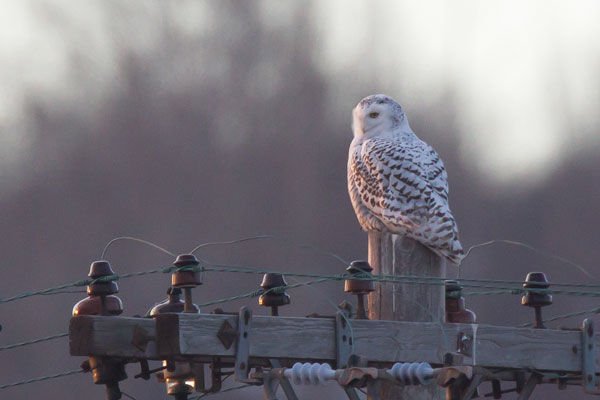From the Field
March 2: Steve Howell's second report from his ongoing Lacandon tour in southern Mexico
A snazzy displaying male White-collared Manakin, a bee-like Black-crested Coquette, and a perched White Hawk were a good start to our visit to the Maya ruins at Bonampak, known for the spectacularly preserved painted figures (below). While enjoying the ruins we sat in the shade on a temple to watch a procession of orioles, tanagers, euphonias, tityras, becards, parakeets, and vireos passing through the many fruiting trees - and then a Black-and-white Hawk-Eagle (below) soared up from behind the trees! We also appreciated a "glowing" male Lovely Continga atop a flowering tree (below) and a confiding Northern Royal Flycatcher (below) before all too soon it was time to leave. The roaring of Black Howler Monkeys (below) has been almost omnipresent on this tour, and today was no exception. What an amazing morning, and still a few days to go...
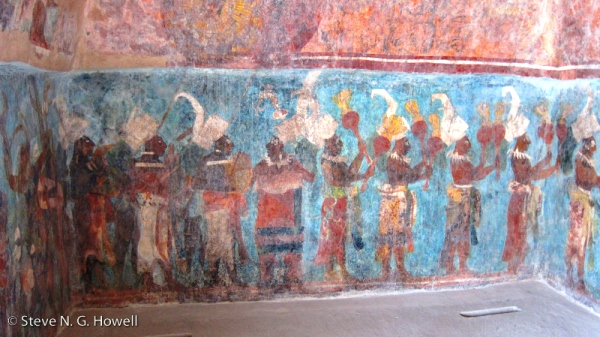
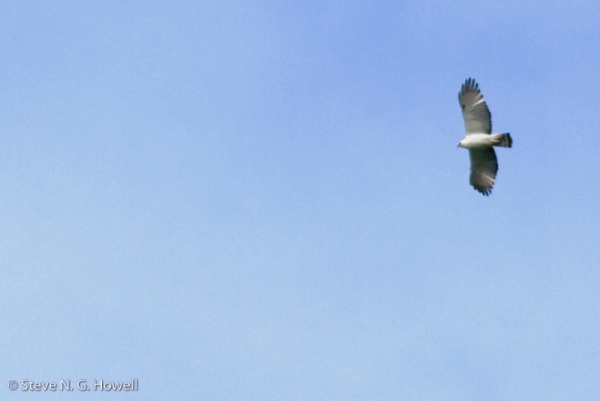
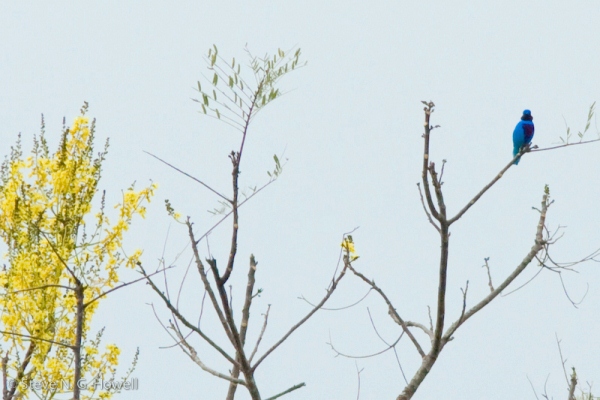
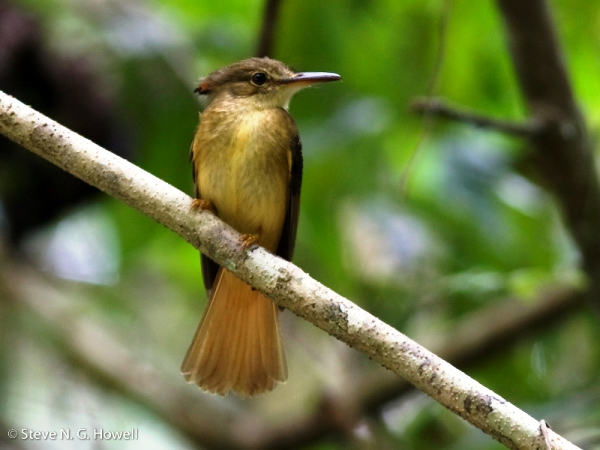
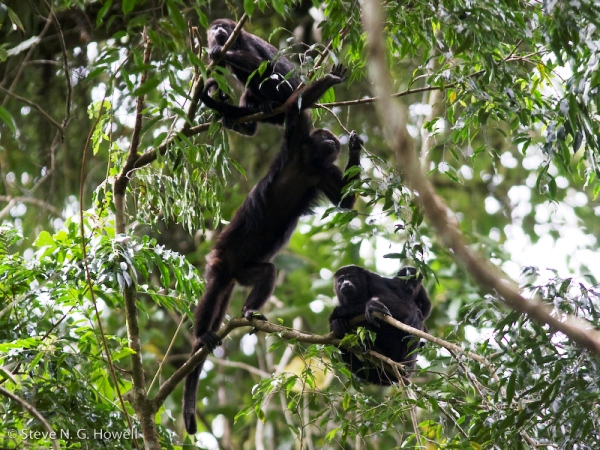
March 2: Steve Howell from his ongoing Lacandon tour in Chiapas, southern Mexico from February 29
From the shout of "Sungrebe!" (below) while savoring orange dark chocolate, to a majestic Great Potoo circling overhead calling as we supped cold Negra Modelos, today was full of fine experiences in the Lacandon - "Mexico's Amazonia." Huge trees lined the scenic, limestone-green Tzendales River (below) where other birds included confiding Gray-necked Wood-Rails (below), the little known Blue Seedeater (below), and, in one spot, a handsome Rufous-tailed Jacamar, singing Green Shrike-Vireo, Rufous Mourner, and Slate-headed Tody-Flycatcher (all seen). Not to mention Scarlet Macaws, King Vulture, and Black Hawk-Eagle. Now it's time for the majestic Maya ruins at Bonampak and Yaxchilán...
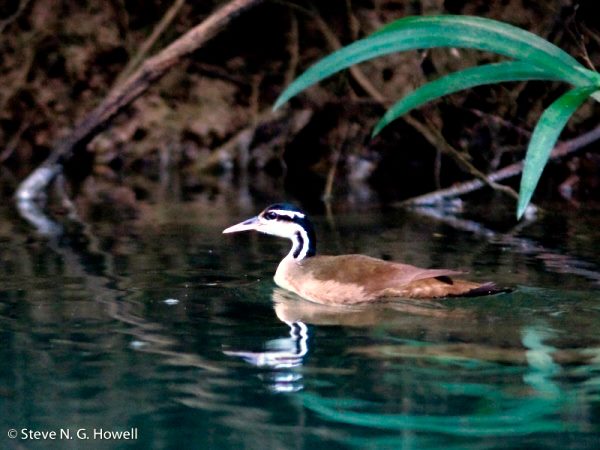
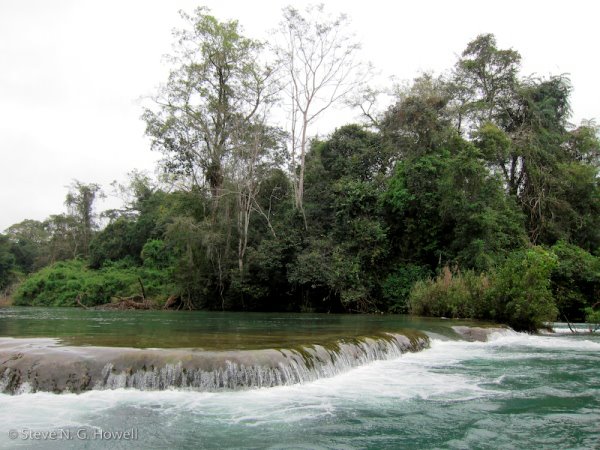
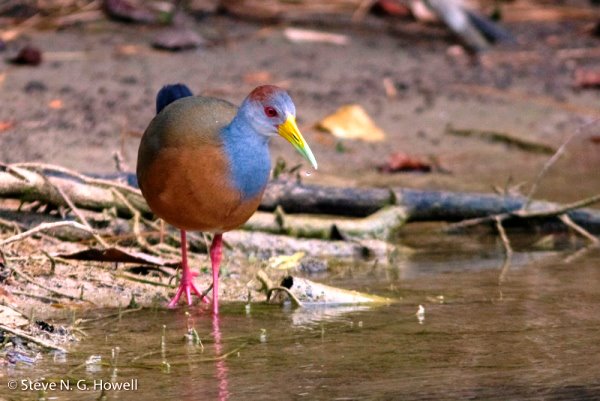
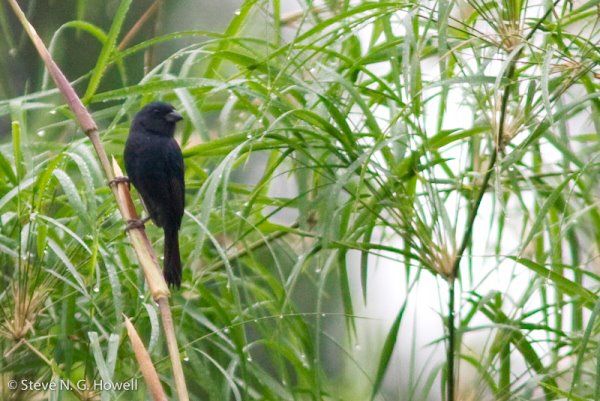
February 18: Jon Dunn from his tour of Northern Thailand
We just finished the first part of our tour in KhaoYaiNational Park, a marvelous place about two hours from Bangkok with vast evergreen forests. Hornbills were especially notable this year - we saw all four species, including at least three scarce Brown Hornbills - and our views of Great Hornbill (below) were especially memorable. Most were at a single large fruiting tree within which we found as well numerous barbets, Thick-billed Green Pigeons, Asian Fairy Bluebirds and Black-naped Orioles (below - thanks Pinit Saengkaew) among others, and underneath a small group of Siamese Firebacks presumably attracted by the fallen fruit. Notable this year were repeated views of gibbons…of both species. I think it’s only the second or third time we’ve encontered the Pileated Gibbon which gave excellent views, and we got to hear it repeatedly give its bubbling calls. Wonderful! We encountered Asian Elephants on three occasions, our first being a large male at a salt lick. Earlier he had stomped a vehicle (fortunately empty), apparently out of irritation that he didn’t have a clear path between the forest and the road! We’re now off to wonderful Chiang Mai and the mountainous west.
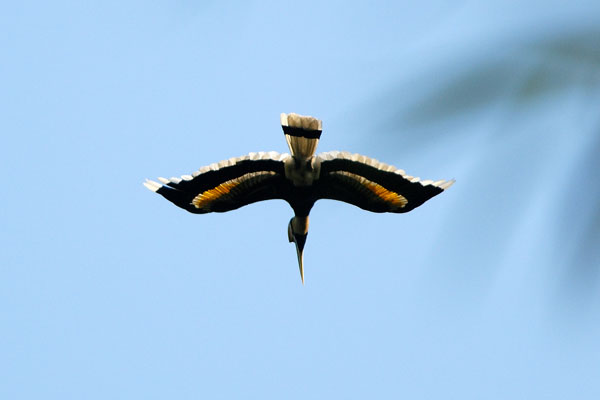
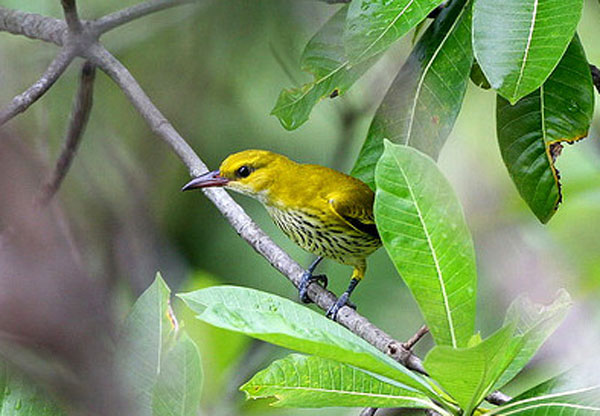
February 14: Gavin Bieber on his just-concluded tour to Guyana
Just back from a 10 day tour to Guyana. This small and remote country, tucked just east of Venezuela, offers the visiting naturalist wonderful (and comfortable) access to a huge area of pristine lowland forest. With over 80% of the country covered in primary forest and little resource extraction ongoing Guyana is a real gem. We were somewhat hampered by unseasonable La Nina driven weather, but the birds were simply fantastic. Guianan Cock-of-the-Rock (below) and the bizzare Capuchinbird probably stole the show, but our lengthy scope views of a singing Thrush-like Antpitta, the stunning Blood-colored Woodpecker (below), superlative Ferruginous-backed Antbirds and multiple views of the attractive and range-restricted Rufous Crab-Hawk certainly were high on the highlight list as well. For 2013 we plan a return visit in the heart of the main dry season, and I can't wait!
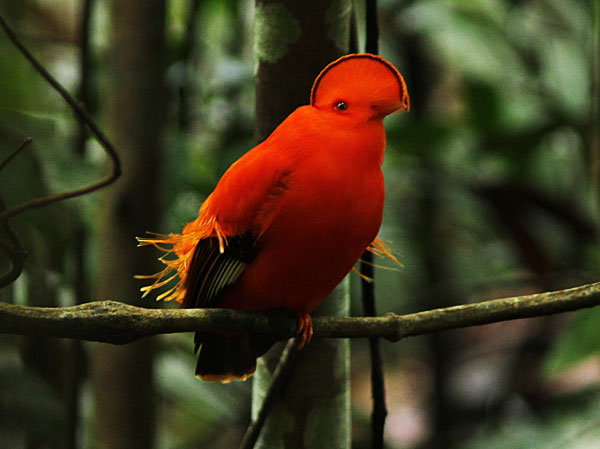
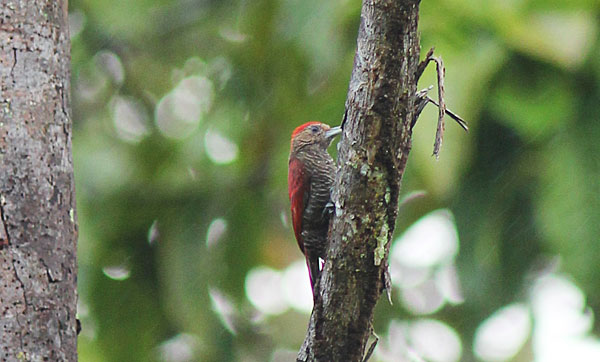
February 14: Paul Holt from his Northern India tour
Text from Paul this morning – the group had fantastic views of Tiger at Ranthambore!
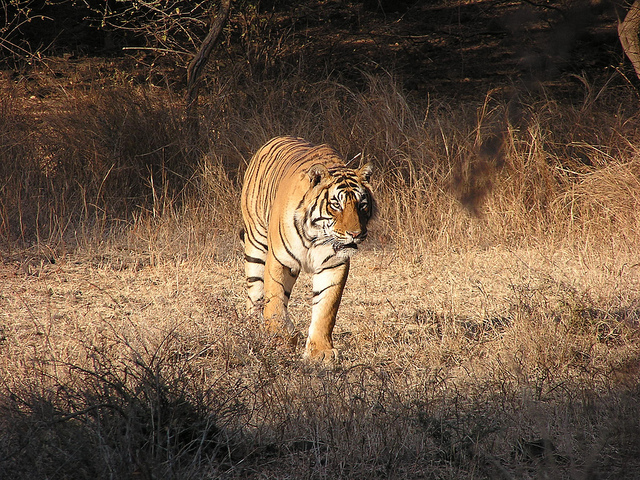
February 11: Will Russell on his just completed Winter Week in Arizona Tour
This was a tour with several defining images: a Florida Canyon Rufous-capped Warbler (below-Laurens Halsey) too close for some to focus; a Lake Patagonia flock of bluebirds with males of all three species side by side while drinking from the lake edge; a Scheelite Canyon Spotted Owl in the mist and rain, and oh-so-close; waves and waves of White-crowned, Vesper and Brewer’s Sparrows in the grasslands behind the San Pedro House; 4000 Sandhill Cranes coming into Whitewater Draw after we had given up hope of any significant arrival; Sage and Bendire’s Thrashers in the Sulphur Springs Valley after it seemed we might miss them, and there too a flock of male Yellow-headed Blackbirds numbering in the thousands; the whirling flocks of Chestnut-collared Longspurs and Horned Larks that surrounded us near Willcox; and finally a vast evening flight of waterfowl at Sweetwater in Tucson, perhaps reminding us of what numbers were like years ago.
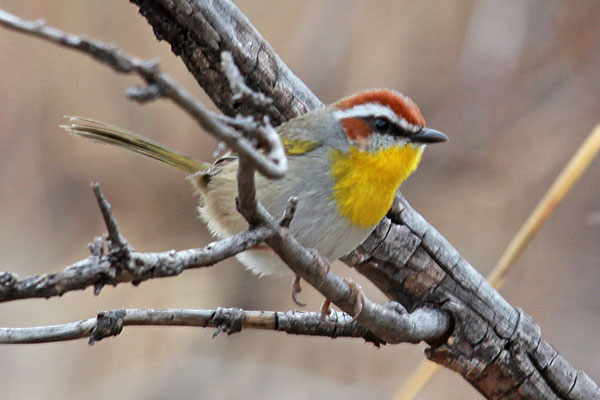
February 11: Chris Wood on his just-completed Minnesota in Winter tour
Well, this tour was so good that a simple summary seems inadequate. Here are the notes from each of the last three days, the first two aleady having been posted.
Feb 5: I must admit there is always a bit of a downside to such an excellent start. How do you top it? The next morning began with two female Spruce Grouse on a roadside. They flew into nearby spruces to quietly feed, one hen occasionally giving a low resonating hoo-hoo-hoo, a sound I had thought was only given by males. In the still morning air, we thought we heard the distinctive rushing of wings of a displaying male. Just then, a stunning male Spruce Grouse (below) landed above and beside us in a spruce and continued his display, sashaying his tail back and forth, spreading his wings and lowering his head to reveal brilliant crimson eye combs! Unbelievable! We continued north where we found a fairly recent burn. As we walked into the soft snow and among overturned trees, we soon heard tapping and came upon a crisply patterned male Black-backed Woodpecker (below). We were treated to full scope-views of a bird quietly foraging and unconcerned by our presence. After a delicious lunch at a local café we headed to Gooseberry Falls State Park. As we drove in, we saw a Northern Hawk Owl (below, See video here.) perched in an area we couldn’t park. We walked back and the bird was gone! After twenty minutes, we refound the bird perched below eye-level in a protected ravine. We watched it for nearly an hour as it preened, hunted and moved from perch to perch. Once again full scope views.
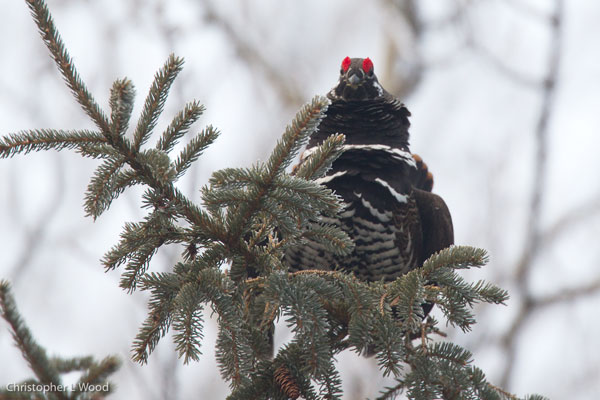
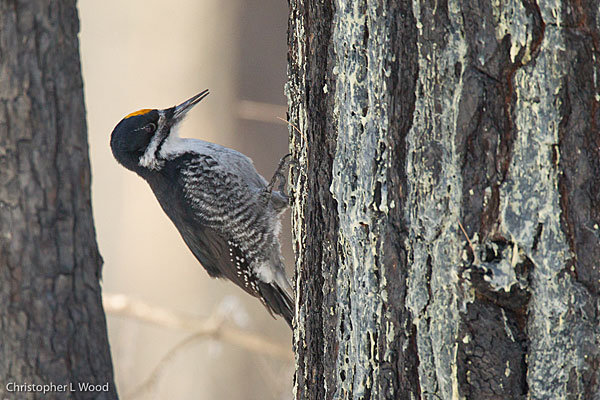
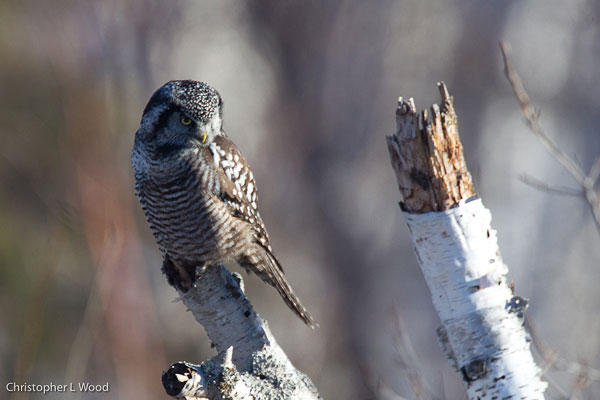
Feb 6: We headed up to Grand Marais, the first time we’ve ever ventured up the lakeshore on this trip. Our quarry was Bohemian Waxwing, which were living up to their name this year. The only place they had been reliably recorded was in this small lakeshore town, but the night before we had bad news. Someone there for the last three days hadn’t seen or heard a single waxwing. Undaunted, we headed up the north shore of Lake Superior. Soon after crossing into Cook County(the northeasternmost of Minnesota’s counties) we saw a flock perched along the roadside (below). Once again, superb scope and binocular views! We continued onto Grand Marais for some excellent coffee and a flock of nearly 500 Bohemian Waxwings, coming to drink water near the beach! Among Red-breasted Mergansers and a flock of Common Goldeneye, we found a 1st-winter male Barrow’s Goldeneye – quite rare in Minnesota. We also dashed into Wisconsin to see a few species around Superior and were rewarded with a stunning male Snowy Owl (below).
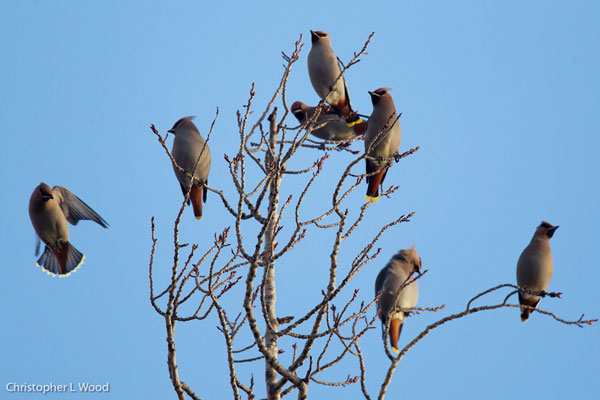
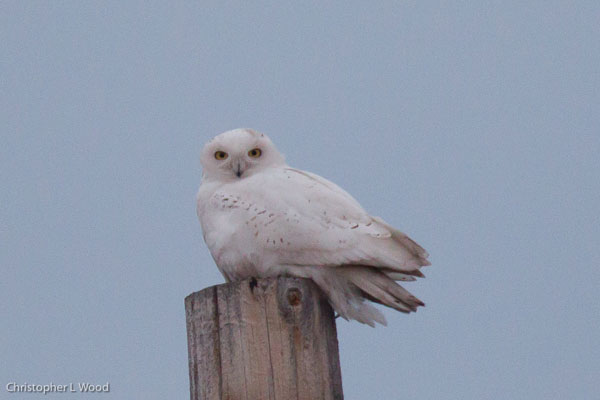
Feb 7: What to do on the final day of a trip where you have seen all the species you can reasonably hope for? Try for ones that are less reasonable – in this case American Three-toed Woodpecker. They say the third time is the charm, and indeed it was. After two unsuccessful attempts in the morning, we returned in the afternoon and found a male Three-toed Woodpecker drumming at eye level. Once again, full-frame scope views at eye-level as the bird drummed and the foraged beside us. We celebrated that night, enjoying another great meal, spectacular wine and the wonderful company.
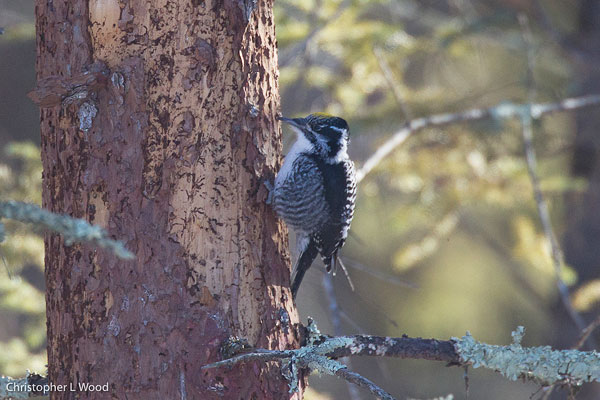
February 11: Rich Hoyer from his and Steve Howell's tour of southern Baja California
Our first two full days of birding Baja California's Cape Region have been simply terrific. Most of us got a head start with the endemic Gray Thrasher in the plantings above the hotel's swimming pool even before the official start of the tour. Yesterday we experienced constant bird activity along the estuary at San José del Cabo, including excellent comparisons of Belding's and Common Yellowthroats. And while write-in Orchard Oriole and Palm Warbler were nice surprises, an immature Peregrine Falcon (below) fearlessly digesting its latest meal in the palm trees right over our heads was most amazing. Then today we birded the foothill oak-palm-cactus forests of the Sierra de la Laguna where many of the Cape Region's endemic subspecies can be found with luck...and we were lucky to find a Northern Pygmy-Owl (below), believed by some to be a separate species, Cape Pygmy-Owl. We also saw and heard how different the resident American Robins are in this region, making everyone a believer in the split as San Lucan Robin (below). The obvious endemic Xantus's Hummingbird showed well, and we also discovered a vagrant Black-throated Green Warbler, perhaps the second record for the region, as well as a continuing vagrant Louisiana Waterthrush, its loud chipping rather incongruous with a background chorus of Baja California Treefrogs. Photos digiscoped by Rich Hoyer.
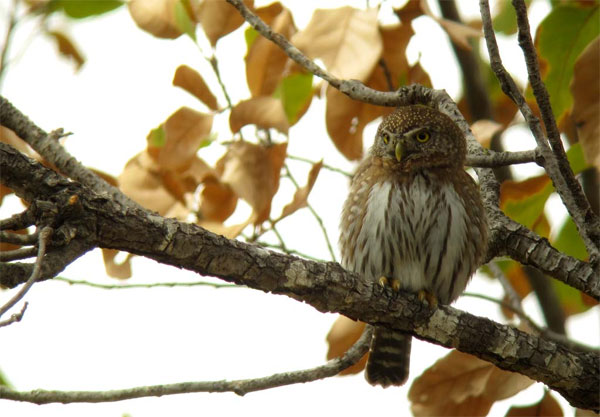
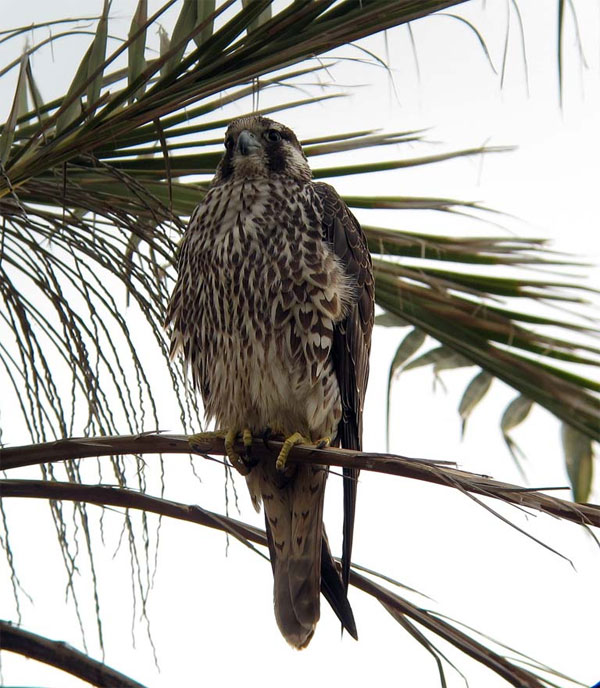

February 4: Chris Wood from his winter Minnesota tour
Apologies for reporting back so soon but we had one of the best mornings I've ever experienced at the Sax-Zim bog. Balmy temperatures and little snow allowed us to do a lot more walking than usual. We took a stroll along an old logging trail where Common Redpolls and White-winged Crossbills were almost constantly calling. We found an adult female Northern Goshawk perched on the far side of an open area that was being mobbed by White-winged Crossbills! Shortly after Vicky spotted a Great Gray Owl that we watched for nearly an hour. It flew 160 degrees around our group from perch to perch hunting the entire time, with little care that we were there. Part of what made it so incredible was the beautiful hoarfrost on many of the trees!
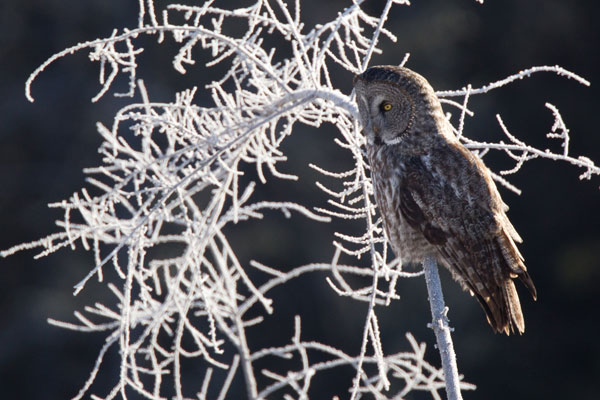
February 3: Chris Wood from his Minnesota in Winter tour
We're off to a great start! We decided to postpone our introductory meeting until dinner in favor of some quick birding around Canal Park – where we had great success with gulls including excellent views of 5 Glaucous, 2 Thayer’s and a very white 1st-winter Iceland Gull with no markings on the primaries. In addition to the common American Herring Gulls we also saw a third-winter Great Black-backed Gull (rare in MN). While not as exciting to most of us as the white-winged gulls, the rarest birds were 3 Ring-billed Gulls, new for this tour and the first time this species has wintered in Duluth (perhaps revealing just how warm and balmy this winter is). After enjoying the gulls we drove around the grain elevators where we saw a Snowy Owl perched atop a utility pole. Now a quick wash up before dinner -- and the introductory meeting.
